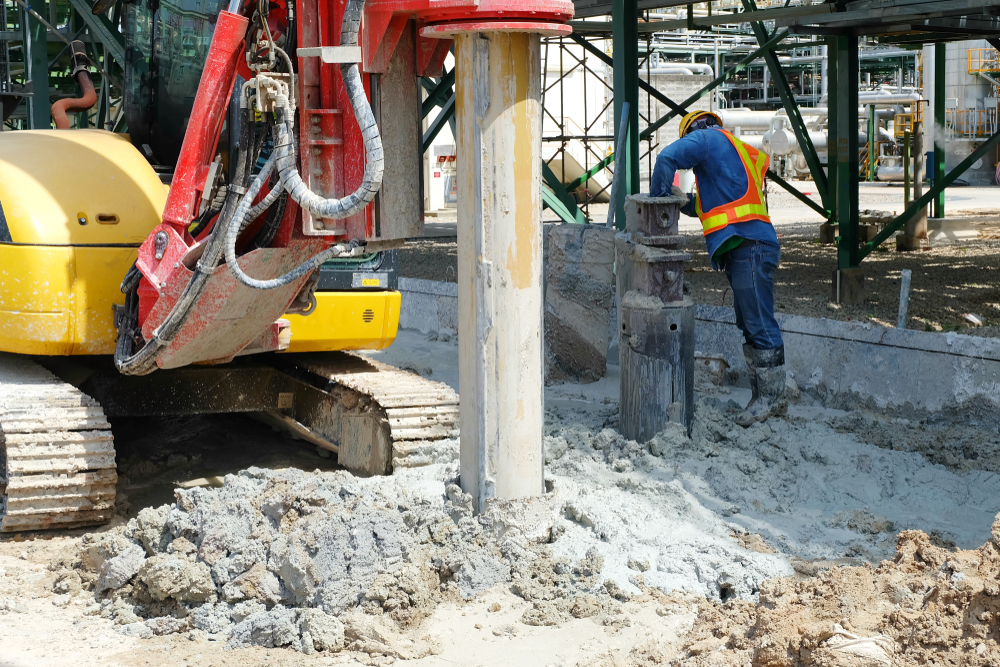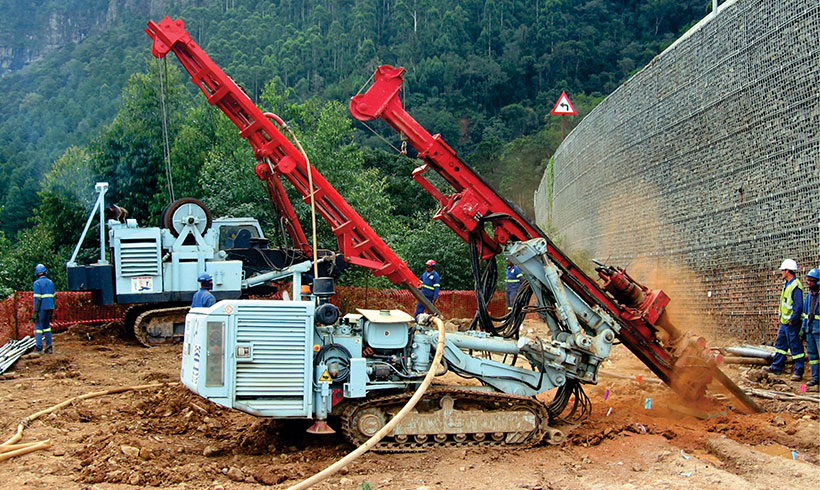Facts About Geotechnical Engineering For Construction Projects Uncovered
The Basic Principles Of Geotechnical Engineering For Construction Projects
Table of ContentsThe Only Guide to Geotechnical Engineering For Construction ProjectsThe 15-Second Trick For Geotechnical Engineering For Construction ProjectsThe Geotechnical Engineering For Construction Projects DiariesThe 5-Minute Rule for Geotechnical Engineering For Construction ProjectsAll About Geotechnical Engineering For Construction ProjectsHow Geotechnical Engineering For Construction Projects can Save You Time, Stress, and Money.Excitement About Geotechnical Engineering For Construction ProjectsHow Geotechnical Engineering For Construction Projects can Save You Time, Stress, and Money.
Coinciding with this increased intricacy comes geological and ecological aspects that impact the layout of the structure, which is arguably one of the most fundamental part of any growth. People require to rely on that structures, bridges, and streets will stand the examination of time. A Geotechnical designer advises on just how a structure can best be supported providing its unique circumstances What's hidden below the surface area of the ground is likely one of the most important item of information that a Geotechnical Designer is after.These examples are then examined by the laboratory to identify dirt composition (Geotechnical Engineering for Construction Projects). The failure of sand, silt, clay, and other products present in the dirt, assists the engineer identify what unique characteristics the site has and what the effects of those might be. Of program dirt structure is just one test that can be carried out on examples
The Of Geotechnical Engineering For Construction Projects
Based on these examinations, there might be extra dirt borings that are pierced, or the engineer may have enough info from the first examinations to make a suggestion to the client on how finest to wage their project. Results are generally reported via borings logs which show the soil composition and qualities at a range of depths.
Geotechnical engineers are in charge of understanding the buildings of natural deposits and utilizing this understanding to establish secure, cost-efficient designs for building and construction tasks. It is a crucial component of any type of civil design job, as it is used to determine the viability of a site for construction and to make certain the framework's security.
This consists of executing research laboratory examinations on the samples and making use of geophysical methods such as seismic refraction and electric resistivity studies. This data is utilized to evaluate the site's suitability for construction and to establish the sort of foundation that should be utilized. Geotechnical engineering evaluates soil problems, identifies possible risks, selects a suitable foundation system for the recommended structure, and establishes the finest structure layout for a provided task.
Geotechnical Engineering For Construction Projects Fundamentals Explained
The structure may end up being unsteady or collapse without appropriate soil stabilisation, causing expensive repairs and potential injury. The stablizing process includes using numerous strategies to boost the security of the soil, such as compaction, grouting, and the addition of strengthening materials. Without dirt stabilization, the risks connected with building jobs would be much greater, and the outcomes much less trusted.
Geotechnical designers conduct site investigations to assess the dirt's properties and recognize prospective threats. They develop and execute dirt stabilization strategies, such as adding cement, lime, or various other maintaining agents, to boost the dirt's strength and stability.
Getting The Geotechnical Engineering For Construction Projects To Work
Geotechnical designers are important in aiding to ensure that soil stabilization is done appropriately to make sure that the framework is safe and safe and secure. Geotechnical engineering is sites likewise utilized to examine dirt conditions and recognize prospective dangers. This consists of examining possible flooding, landslides, and other all-natural calamities that can affect the foundation.
Geotechnical designers use this understanding to do website investigations, dirt, and rock testing, and to analyze the outcomes to figure out the proper layout parameters for a job. This info is made use of to make sure that the structure, maintaining wall surfaces, slopes, and other frameworks built on or within the subsurface products have enough stability and resistance to external lots, such as earthquakes, wind, and water.
These frameworks need a deep understanding of the actions of the subsurface products, as well as the capacity to handle the impact of excavation and building and construction on the surrounding setting. Geotechnical engineers utilize their know-how to determine the appropriate design parameters for these structures, such as the dimension and form of the passage, the strength of the sustaining rock, and the kind and quantity of support called for.
In enhancement to the layout and building and construction of frameworks, geotechnical design also plays an important duty in the rehab and maintenance of existing frameworks. As structures age, they may experience degradation or various other issues that impact their stability and efficiency. Geotechnical engineers use their know-how to examine the condition of these frameworks, recognize the reasons for the troubles, and develop methods to address them.
Not known Details About Geotechnical Engineering For Construction Projects
In this post, I will certainly go over the role of geotechnical engineering and the sorts of issues geotechnical designers address. Geotechnical engineers (geotechs) are associated with almost every kind of civil design task. After all, every structure is supported by soil or rock unless it is drifting, flying, or dropping.
Geotechs are generally most included at the beginning of a project. Geotechnical Engineering for Construction Projects. A few of the tasks that a geotech might be accountable for are exploring subsurface problems, establishing required laboratory testing of soil and rock, interpreting the subsurface exploration outcomes, and writing reports that document the site problems and provide referrals for structures, fill requirements, incline stability, and so on
It is not uncommon for geotechnical designers to focus on only one of the areas listed above and study that subject their whole job. Geotechnical engineering is an important aspect of any type of civil engineering job. Regardless of how fantastic a framework is developed, it will not be great for long if the structure is poor.
Some Known Facts About Geotechnical Engineering For Construction Projects.

Oftentimes, points that might not seem essential end up being important years go to my site later on when problems emerge. One last thing to keep in mind: geotechnical design is wed to geology. Regardless of how terrific your design expertise is, if something vital is missed in the geologic characterization at a website, your competence may not conserve you.
Jese lives in West Virginia with his spouse and son. He appreciates creeping around on any visit this site type of landslide he can find and hanging around fly fishing on the water. He can be located on LinkedIn. I hope you enjoyed this week's article by visitor author Jese Vance. If you want your firm perhaps signing up with the Civil Engineering Collective, please call us here or call us at 800-920-4007. I wish you'll join us.
How Geotechnical Engineering For Construction Projects can Save You Time, Stress, and Money.

It is essential to understand the soil condition prior to designing the type and deepness of structure needed for the framework. In order to recognize the subsurface soil problem, a geotechnical examination is called for.
The Best Guide To Geotechnical Engineering For Construction Projects
As soon as the examination results come, the Geotechnical Designer analyses the report, which outlines the dirt and rock homes groundwater problem and the linked dangers. The type of structure called for to develop the framework is then identified. Based on the referral of the Geotechnical Designer, the architectural designer then designs the framework.